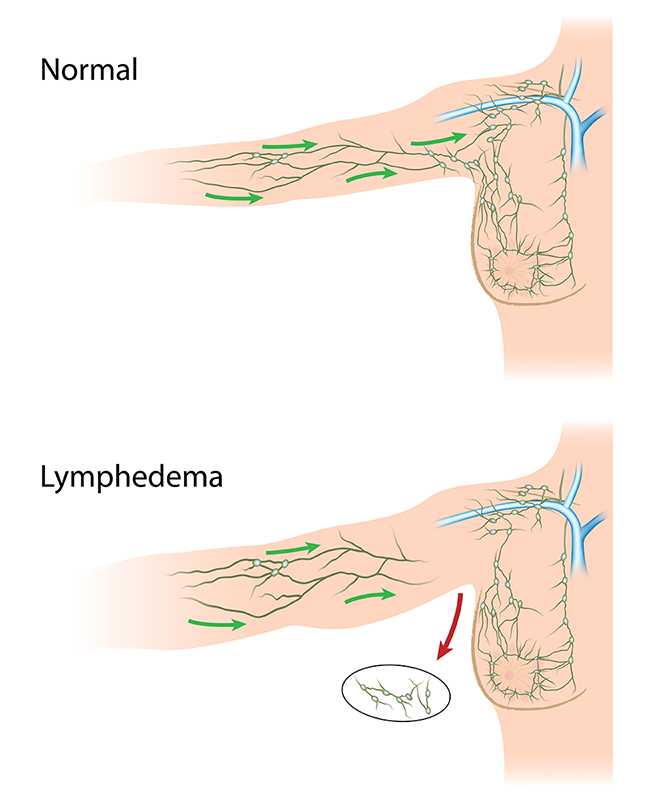Introduction to Lymphedema
Have you had surgery or other trauma or radiation therapy?
Are you experiencing:
Swelling that is not resolving
Swelling that is getting worse
Swelling that feels warm, shows redness (rash) or is itchy
Swelling with tingling or burning pains
Swelling accompanied with fever and chills
Swelling with decreased flexibility in the joints
Feeling of tightness around the arm on the area that was treated for cancer
Difficulty fitting into clothing or jewelry
Weakness, pain, aching or heaviness in the arm, legs, or feet
Skin that looks shiny, has fewer folds, and feels stiff or taut
Dull ache in the affected limb
Pitting (small indentations left on the skin after pressing on the swollen area)
You may have a condition called Lymphedema.
WHAT IS LYMPHEDEMA?
Lymphedema is swelling that occurs as a result of accumulation of lymph fluid when lymphatic system is faulty or damaged. It is a chronic condition.
When lymph nodes and lymph vessels are affected from reasons such as trauma from cancer treatment, surgeries, etc., the lymphatic fluid may not drain effectively. This causes build-up of fluid under the skin and swelling.
Lymphedema is most commonly seen in the arm(s) and/or leg(s). Occasionally, it is in the other parts of the body such as the head, neck or trunk.
Lymphedema may be either primary or secondary:
- Primary lymphedema is caused by the abnormal development of the lymph system. Symptoms may occur at birth or later in life.
- Secondary lymphedema is caused by damage to the lymphatic system or blockage of the lymph vessels.
- Common causes of Secondary Lymphedema: Lymphatic vessels damage or blockage may be caused by infection, injury/trauma, cancer, removal of lymph nodes, radiation to the affected area, or scar tissue from radiation therapy or surgery.
- Secondary lymphedema in Cancer Patients: Lymphedema often occurs in breast cancer patients who had all or part of their breast removed and axillary (underarm) lymph nodes removed. Lymphedema in the legs may occur after surgery for uterine cancer, prostate cancer, lymphoma, or melanoma. It may also occur with vulvar cancer or ovarian cancer.

